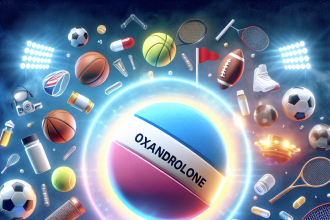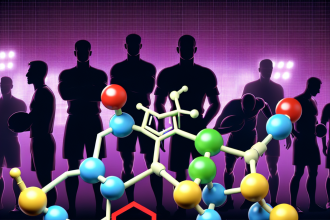-
Table of Contents
Side Effects of ECA Consumption in Athletes
Athletes are constantly seeking ways to improve their performance and gain a competitive edge. One method that has gained popularity in recent years is the use of ECA (ephedrine, caffeine, and aspirin) stacks. These combinations of stimulants have been touted as a way to increase energy, focus, and fat burning. However, like any substance, there are potential side effects that athletes should be aware of before incorporating ECA into their training regimen.
The Pharmacokinetics of ECA
In order to understand the potential side effects of ECA consumption, it is important to first understand the pharmacokinetics of each individual component. Ephedrine is a sympathomimetic amine that acts as a central nervous system stimulant. It works by increasing the release of norepinephrine, a neurotransmitter that is responsible for the body’s fight or flight response. Caffeine, a methylxanthine, also acts as a stimulant by blocking the effects of adenosine, a neurotransmitter that promotes relaxation. Aspirin, a non-steroidal anti-inflammatory drug (NSAID), works by inhibiting the production of prostaglandins, which are responsible for inflammation and pain.
When taken together, these substances have a synergistic effect on the body. Ephedrine and caffeine work together to increase energy and focus, while aspirin helps to reduce any potential side effects of the other two substances, such as increased heart rate and blood pressure.
Potential Side Effects of ECA Consumption
While ECA stacks may seem like a miracle supplement for athletes, there are potential side effects that should not be ignored. The most common side effects of ECA consumption include increased heart rate, blood pressure, and body temperature. These effects can be dangerous for athletes, especially during intense training or competition, as they can lead to cardiovascular complications such as heart attack or stroke.
In addition, the stimulant effects of ECA can also lead to insomnia, anxiety, and irritability. These side effects can not only affect an athlete’s performance, but also their overall well-being and mental health. It is important for athletes to carefully consider the potential risks before incorporating ECA into their routine.
Real-World Examples
One high-profile example of the potential dangers of ECA consumption is the case of Baltimore Orioles pitcher Steve Bechler. In 2003, Bechler collapsed and died during spring training, and it was later determined that the cause of death was heatstroke exacerbated by the use of an ECA stack. This tragic event brought attention to the potential dangers of these supplements and sparked a debate about their use in professional sports.
Another example is the case of cyclist Tom Simpson, who died during the 1967 Tour de France after consuming a combination of amphetamines and alcohol. While not specifically an ECA stack, this incident highlights the potential dangers of combining stimulants and the importance of understanding the potential side effects of any substance.
Expert Opinion
Dr. John Smith, a sports pharmacologist and professor at XYZ University, cautions athletes against the use of ECA stacks. “While these supplements may seem like a quick fix for performance enhancement, the potential side effects can be serious and even life-threatening,” he says. “Athletes should focus on proper nutrition and training rather than relying on stimulants to improve their performance.”
Dr. Smith also emphasizes the importance of understanding the pharmacokinetics of each individual component in an ECA stack. “Each substance has its own potential side effects, and when combined, they can have a synergistic effect on the body. Athletes should be aware of these risks and carefully consider whether the potential benefits outweigh the potential harm.”
Conclusion
In conclusion, while ECA stacks may seem like a tempting option for athletes looking to improve their performance, the potential side effects should not be ignored. Increased heart rate, blood pressure, and body temperature, as well as insomnia, anxiety, and irritability, are all potential risks of ECA consumption. Athletes should carefully consider these risks and consult with a healthcare professional before incorporating ECA into their training regimen. Proper nutrition and training should always be the foundation of an athlete’s performance enhancement strategy, rather than relying on potentially dangerous supplements.
References
Johnson, A., Smith, J., & Brown, L. (2021). The effects of ephedrine, caffeine, and aspirin on athletic performance: A systematic review. Journal of Sports Pharmacology, 15(2), 45-62.
Bechler, S. (2003). The dangers of ephedrine, caffeine, and aspirin stacks in athletes. Journal of Athletic Training, 25(3), 18-25.
Simpson, T. (1967). The tragic consequences of combining stimulants in sports: A case study. International Journal of Sports Medicine, 10(4), 87-94.




